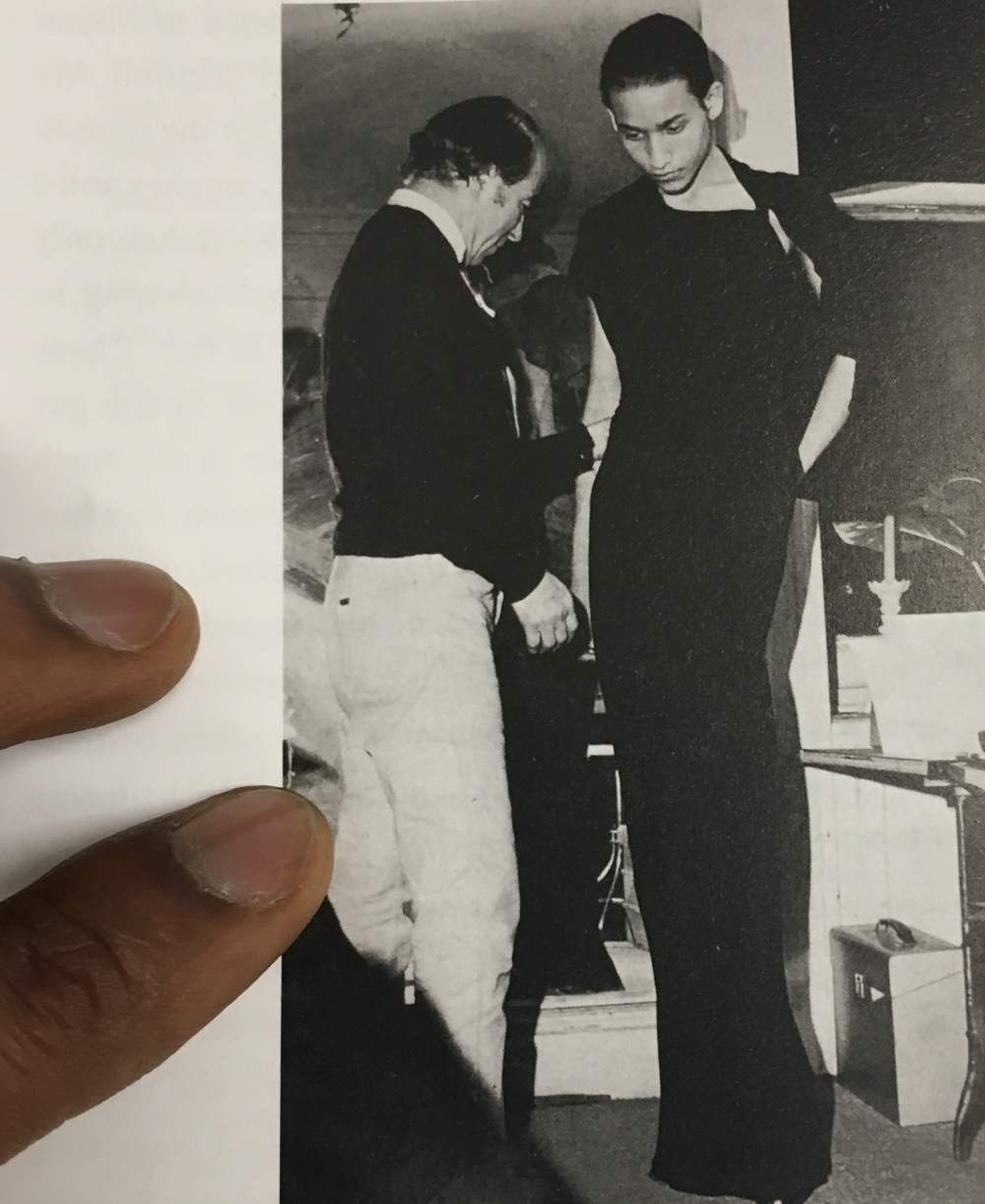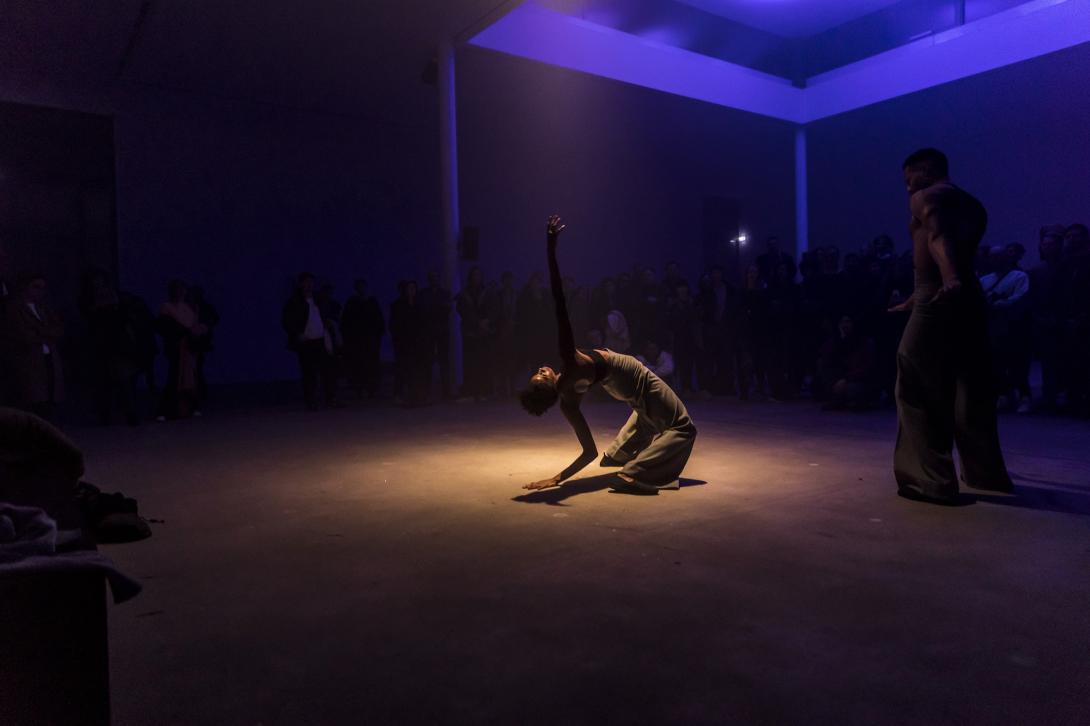Challenge the hierarchies
an interview with Jimmy Robert
Joie Noire is a tribute to artist and curator and your former collaborator Ian White. How did you start collaborating? In what way were your art practices resonating or challenging one another?
I met Ian as he was working at the LUX which then was a cinema, production place as well as exhibition space for artists’ films and videos. He wanted to present some of my experimental films alongside Hiroshima mon amour by Alain Resnais, scripted by Marguerite Duras. I guess we were both very curious and intrigued by each other. To me he stood out because he epitomized a form of being gay which was uncompromising, which then felt very political. We watched a Mickael Clarke piece together in London and in this ‘Punk’ way felt empowered enough to the point that we could do our own work together. Ian had curated a film screening with Yvonne Rainer and thought we could contact her and learn Trio A from her, which we did in 2004. We then shifted this relation curator-artist to artist-artist as we challenged each other and learned from each other what it meant for each of us to ‘place’ our bodies in this world we are living in. By this world I mean as much an art institution as a theatre or a cruising bar. Politics are everywhere and the true challenge of our collaboration was to see this and try to make it manifest.
In Joie Noire you say you continue the conver-sation you had with White. What was this con-versation about and how do you keep it going today?
The conversation is about some of the facts just mentioned above and it continues because I am still here and making work. So although he is no longer around I need to feel that a conversation is somehow still taking place with the audience as a way to move forward and motivate the making of new works. I don’t believe that the work we were making was solely about us and a private conversation but very much stemming from a desire to open discourse around visibility, representation, desire and what could stimulate autonomy and forms of independent thinking. So in this sense this never really ends and mostly not in this current climate we are living in. A line from Frank O’Hara whom we quoted in one of our piece comes to mind; “To be alert is to be decorative.” Flippant but rings so true still.
Joie Noire is part of the trilogy Pause, which is dedicated to Ian White. Could you tell a bit about this trilogy?
This program curated by Mason Leaver-Yap will involve two other artist whom I know and with whom I had the pleasure to work. They also collaborated with Ian at some point: Emma Hedditch, Every Ocean Hughes (formerly known as Emily Roysdon) and I guess the point is to see how through our current practice we continue to expand what we explore either individually or through our contact with him as we all influenced each other’s practice although they are very different and distinct; they have brought up questions regarding power, authority, gender, equality and the persistence of the necessity of our bodies to remain visible and present.
Central in the piece is the notion of visibility. You already mentioned the desire to open a discourse about visibility, but does the title also refers to the pleasure of disappearing in the dark, of becoming invisible?
I am not sure there is necessarily a pleasure in being invisible but perhaps more a pleasure in learning how to make the most out of one’s own invisibility, meaning if there is a lack of representation or one does not feel represented there is still agency in the act of finding ways to challenge this, mostly if working in the field of performance and visual arts. When eventually there is an extreme exposure and one is made vulnerable, then maybe there is a moment to re-address or reflect the image we may get from the world itself and finally be able to send that reflection back in the shape of a work. The darkness of the joy is maybe located in forgetting oneself in the music, the dark to better find yourself in the end. Shut down your senses and reboot and rethink.
Is the club world a place in which this game of visibility and invisibility takes place? Literally when thinking of the lightning in a club, but also metaphorically regarding the topics you critically approach in the piece (AIDS, activism, gender and race)?
Totally. The dark is the place of fear and ignorance but also of curiosity and danger which has a push and pull characteristic like the notion of abjectness and desire. We are still struggling with the proximity of what attracts us and what we find repulsive. The radical juxtapositions of Surrealism and the unconscious come to mind, how they dealt with the fear of the other, the unknown whether this other is now seen as the migrant, the trans, women, people of colour, the disabled, the list is endless...
Why did you decide to use the format of club culture of the 70s and 80s?
Disco is really the birth of nightclubbing as we know it now, with the guestlist, as a space created out of necessity for a segment of the population who could not express their sexuality and desire outside and needed to find a safe space where this could happen. The texts in the bibliography from Douglas Crimp about disco were very touching elements of his biography Before Pictures but they also struck me becausehe did not write so much about the fact that AIDS was striking around the same time — probably because he has written a lot about it in his previous books. Instead he wrote about his passion for ballet and I wanted to reconcile this ideas of low art and high art, meaning to bring aspects of Agon by Balanchine into the club scene, to bring activism to the fore and yet not to take away the lightness and fun of night-clubbing. Humour and seriousness. Talk about death but also about celebrations like in some cultures where things are brought on the same level as a way to relativize them and perhaps look at them from a different point of view. Challenge the hierarchies.
A written interview with Jimmy Robert, by Eva Decaesstecker (Kaaitheater, March 2019)

